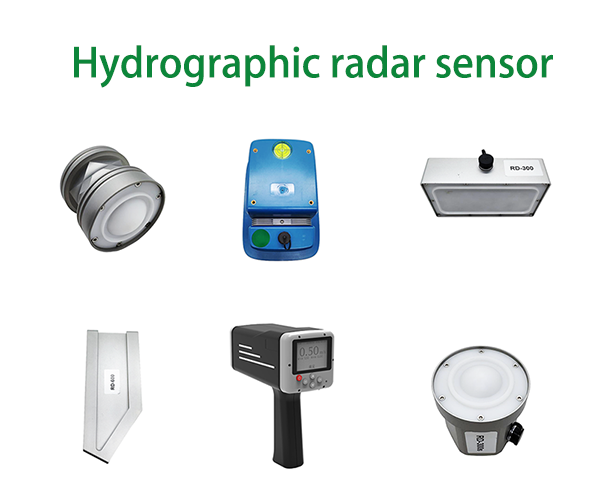Džakarta, 17. veljače 2025.— Indonezija, arhipelag poznat po svojim prostranim vodenim putovima i raznolikim ekosustavima, prihvaća tehnološke inovacije primjenomradar za temperaturu vode, senzori brzine i protokapreko brojnih rijeka i sustava za navodnjavanje. Ova vrhunska tehnologija ima za cilj poboljšati upravljanje vodnim resursima, poboljšati otpornost na poplave i podržati održive poljoprivredne prakse kao odgovor na ekološke izazove zemlje.
Razumijevanje tehnologije
Senzori brzine i radarske temperature vode koriste naprednu radarsku tehnologiju za mjerenje brzine protoka i temperature vodenih tijela u stvarnom vremenu. Emitiranjem radarskih valova i analizom reflektiranih signala, ovi senzori mogu precizno izmjeriti koliko se brzo voda kreće i koja je njezina temperatura, pružajući ključne podatke koji pomažu u praćenju ekološkog zdravlja i učinkovitom upravljanju distribucijom vode.
„Jedinstveni geografski i klimatski obrasci naše zemlje čine nužnim usvajanje inovativnih tehnologija za upravljanje našim vodnim resursima“, izjavila je dr. Siti Nurjanah, stručnjakinja za upravljanje vodnim resursima u indonezijskom Ministarstvu javnih radova i stanovanja. „Ovi senzori nam daju dublje razumijevanje dinamike rijeka, što je ključno i za održivost okoliša i za upravljanje katastrofama.“
Rješavanje rizika od poplava
Jedan od najhitnijih izazova Indonezije je upravljanje poplavama, što je pogoršano klimatskim promjenama i čestim kišama. Uvođenje radarskih senzora temperature vode i brzine protoka značajno će poboljšati sposobnost zemlje da predvidi i reagira na poplave, posebno u gusto naseljenim urbanim područjima.
„S podacima o protoku i temperaturi vode u stvarnom vremenu, možemo donositi brže i informiranije odluke vezane uz kontrolu poplava“, objasnio je Rudi Hartono, voditelj Nacionalne agencije za ublažavanje katastrofa. „To znači učinkovitije raspoređivanje resursa i pravovremeno upozoravanje ugroženih zajednica.“
Posljednjih godina, gradovi poput Jakarte doživjeli su teške poplave koje su prouzročile veliku štetu na infrastrukturi i raselile tisuće stanovnika. Očekuje se da će napredne mogućnosti praćenja koje pružaju ovi senzori poboljšati točnost prognoza, omogućujući vlastima da se bolje pripreme i ublaže posljedice poplava.
Podržavanje održive poljoprivrede
Osim upravljanja poplavama, radarski senzori temperature vode i brzine protoka također igraju ključnu ulogu u poljoprivrednim praksama. Budući da se Indonezija uvelike oslanja na poljoprivredu za svoje gospodarstvo i sigurnost hrane, učinkovito upravljanje vodama je ključno, posebno u sustavima navodnjavanja.
„Senzori nam omogućuju praćenje temperature i protoka vode za navodnjavanje, što može utjecati na prinose usjeva“, rekao je dr. Andi Saputra, poljoprivredni znanstvenik na Poljoprivrednom sveučilištu u Bogoru. „S tim informacijama poljoprivrednici mogu optimizirati svoje prakse navodnjavanja, što dovodi do učinkovitijeg korištenja vode i potencijalno povećanja produktivnosti.“
Osiguravanjem da usjevi primaju vodu odgovarajuće temperature i protoka, poljoprivrednici mogu poboljšati svoje prinose i smanjiti otpad, doprinoseći ukupnoj održivosti poljoprivrednih praksi u zemlji.
Utjecaj na ekosustave i bioraznolikost
Praćenje temperature vode i brzine protoka nije samo korisno za ljude; također igra ključnu ulogu u očuvanju bogate bioraznolikosti Indonezije. Mnoge vrste riba i drugog vodenog života osjetljive su na promjene temperature vode i uvjeta protoka, na koje mogu utjecati klimatske promjene i ljudske aktivnosti.
„Korištenjem ovih senzora možemo prikupljati ključne podatke o vodenim ekosustavima, što nam omogućuje poduzimanje proaktivnih mjera za njihovu zaštitu“, rekla je dr. Melati Rahardjo, ekologinja specijalizirana za očuvanje rijeka. „Ova tehnologija omogućuje nam održavanje osjetljive ravnoteže naših ekosustava, koji su ključni za bioraznolikost i lokalne izvore prihoda.“
Vladina predanost i uključenost zajednice
Indonezijska vlada posvećena je proširenju postavljanja ovih senzora diljem arhipelaga, posebno u područjima sklonim poplavama i ekološkoj degradaciji. Pilot projekti pokazali su obećavajuće rezultate, a dužnosnici žele proširiti te napore.
Uključivanje zajednice također je značajan aspekt ove inicijative. Organiziraju se lokalne radionice i edukativni programi kako bi se stanovnici informirali o prednostima tehnologije i važnosti očuvanja vode.
„Ključno je da zajednice razumiju kako mogu doprinijeti naporima u upravljanju vodama“, primijetio je Arief Prabowo, vođa zajednice u središnjoj Javi. „Podizanjem svijesti i uključivanjem lokalnog stanovništva u napore praćenja možemo osigurati učinkovitije i održivije prakse.“
Zaključak
Uvođenje senzora brzine protoka i radara za temperaturu vode predstavlja veliki korak naprijed u indonezijskim strategijama upravljanja vodama. Pružajući podatke u stvarnom vremenu bitne za učinkovito upravljanje poplavama, optimizaciju poljoprivrede i zaštitu ekosustava, ovi senzori trebali bi poboljšati otpornost i održivost indonezijskih vodnih resursa. Kako se zemlja suočava s rastućim ekološkim izazovima, takve će inovacije igrati ključnu ulogu u zaštiti ljudi i okoliša za buduće generacije.
Za više informacija o radarskim senzorima,
Molimo kontaktirajte Honde Technology Co., LTD.
Email: info@hondetech.com
Web stranica tvrtke: www.hondetechco.com
Vrijeme objave: 17. veljače 2025.


